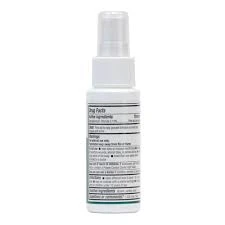what is poly aluminum chloride
What is Poly Aluminum Chloride?
Poly Aluminum Chloride (PAC) is an inorganic polymer widely used in various industrial applications, particularly in water treatment processes. It is a coagulant that plays a crucial role in clarifying drinking water, treating wastewater, and purifying industrial effluents. The unique chemical properties and efficiency of PAC have made it a preferred choice over traditional coagulants like alum (aluminum sulfate).
Chemical Composition and Properties
Poly Aluminum Chloride is a mixture of aluminum chloride and aluminum hydroxide, often represented by the general formula [Aln(OH)mCl(3n-m)]·xH2O. The designation poly refers to the polymeric nature of the compound, which consists of a chain of aluminum hydroxyl complexes. PAC is available in various forms, including powder and liquid, and its formulation can vary depending on the specific application and required properties.
One of the reasons PAC is favored in water treatment is its lower dosage requirement compared to conventional coagulants. Typically, PAC demonstrates better performance in destabilizing suspended particles and enhancing coagulation under various pH conditions. This efficiency can lead to reduced handling and operational costs, as well as improved clarity in the treated water.
Applications of Poly Aluminum Chloride
1. Water Treatment PAC is primarily used in the treatment of drinking water and wastewater. It effectively removes impurities, microorganisms, and suspended particles, ensuring that water adheres to health standards. The process involves the addition of PAC to water, where it aggregates impurities into larger flocs that can be easily removed.
2. Industrial Processes In industries such as papermaking, mining, and textile manufacturing, PAC is employed for its coagulant and flocculant properties. In these settings, it helps in clarifying process water, recovering valuable materials, and controlling waste.
3. Oil and Gas Industry PAC is also used in the oil and gas sectors, particularly in drilling fluids. It aids in stabilizing drilling muds and enhancing the efficiency of the drilling process.
4. Construction In construction, PAC is used in soil stabilization and as a set-retarding agent in cement mixes. Its ability to bind and coagulate contributes to the durability and strength of construction materials.
what is poly aluminum chloride

5. Agriculture PAC is used in agriculture for soil conditioning and improving water retention in irrigation systems. Its properties can enhance the availability of nutrients and promote plant growth.
Advantages of Using PAC
The increasing popularity of PAC in various applications can be attributed to several key advantages
- Higher Efficiency PAC is more effective than traditional alum in removing turbidity and organic matter from water, often resulting in clearer treated water.
- Lower Chemical Dosage The superior performance of PAC often means that smaller quantities are required compared to other coagulants, reducing costs and environmental impact.
- Versatility PAC can be used effectively across a wide range of pH levels, making it suitable for diverse treatment conditions.
- Improved Settling Rates The flocs formed with PAC settle faster than those formed using other coagulants, increasing the efficiency of the sedimentation process.
- Reduced Sludge Production The use of PAC generally results in lower sludge volumes compared to traditional coagulants, which simplifies disposal and treatment of waste byproducts.
Conclusion
In summary, Poly Aluminum Chloride is a highly effective coagulant that plays a significant role in water treatment and various industrial applications. Its unique properties, such as higher efficiency, lower dosage requirements, and versatility across different conditions, make it an invaluable chemical in modern water management practices. As industries continue to seek sustainable and efficient solutions to their wastewater and treatment challenges, PAC will likely remain a prominent choice in the field. Whether for drinking water purification, industrial processing, or environmental management, the benefits of using PAC are clear, supporting its continued growth and utilization across numerous sectors.
-
Dodecyldimethylbenzylammonium Chloride: High-Purity DisinfectantNewsAug.30,2025
-
2-Phosphonobutane-1,2,4-Tricarboxylic Acid: Scale & CorrosionNewsAug.29,2025
-
Premium Isothiazolinones | Broad-Spectrum Biocidal SolutionsNewsAug.28,2025
-
LK-319 Special Scale And Corrosion Inhibitor For Steel Plants: Advanced Solutions for Industrial Water SystemsNewsAug.22,2025
-
Flocculant Water Treatment: Essential Chemical Solutions for Purification ProcessesNewsAug.22,2025
-
Isothiazolinones: Versatile Microbial Control Agents for Industrial and Consumer ApplicationsNewsAug.22,2025





